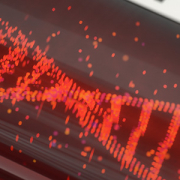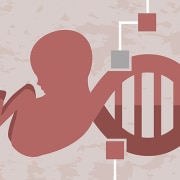Genomic sequencing: A decade to a day
Curiosity, patience, and the humble pea plant are three fundamental factors that have allowed us to sequence an entire human genome in 24 hours
The impact that the exponential growth of technology has had on genomics in the last twenty years is dizzying. But how did we get here today? It’s worth taking a quick break from the here and now to consider the path paved by numerous scientists over the last 150 years that has brought us to a point in history where genome sequencing is revolutionising healthcare.
Sequencing: A slow start
Historically, in genetics we were used to things moving pretty slowly.
Gregor Mendel studied pea plants for eight years before, in 1866, he described ‘invisible factors’ that determined dominant and recessive traits. It took over three decades for the wider scientific community to understand the significance of Mendel’s theory. As the new century rolled around, it wasn’t until the early 1950s that Watson and Crick, building on Rosalind Franklin’s work, delineated the three-dimensional structure of DNA.
Even with this greater understanding and over half a century of research, it took 20 years to sequence DNA itself. Fred Sanger was a Cambridge scientist who won his first Nobel Prize in Chemistry for proving that proteins had precise amino acid sequences. He posited that since proteins were ordered molecules, the DNA that makes them must also have an order.
The process of proving this was − you’ve guessed it − very slow. The technique had gone through a few iterations before being capable of accurately sequencing double-stranded DNA. In 1977, Sanger called the technique the dideoxy chain-termination method − perhaps because he was so used to things taking a long time, even to say! It’s now called, rather more snappily, Sanger sequencing.
A prize-winning innovation
Sanger’s technique was groundbreaking, securing him his second Nobel Prize. Improvements to the technique over the years enabled the sequencing of sections of DNA up to around 600 bases in length.
The potential benefits of unravelling the genetic code were manifold, however, the technique was slow and expensive because scientists could only sequence one small section of DNA at once. The Human Genome Project, which was launched in 1990 and cost $2.7 billion, took 13 years to almost entirely sequence the human genome using Sanger sequencing.
Sequencing in parallel
So, how did things speed up? Enter what is now called massively parallel sequencing, or next-generation sequencing. These new technologies were developed by employing Sanger’s basic principle of using sample DNA as a template for DNA synthesis, but they allow hundreds of thousands of fragments of DNA to be sequenced at the same time.
It is now possible to sequence an entire human genome in a single day, at a cost of around $600. A huge difference compared to old methods.
Transforming the speed of DNA sequencing has not only vastly increased its applications in both clinical and research settings, it has changed the approach to genomic testing and the analysis of variants.
Widening the net
In the past, only genes that closely fitted a patient’s clinical features would be analysed. This could therefore only be undertaken for the subset of patients whose phenotype suggested a particular diagnosis with a known genetic cause.
This targeted approach meant that when a variant was identified in a gene, it had a much higher chance of being disease-causing. Variants could therefore be analysed with a ‘guilty until proven innocent’ approach.
Now, with the advent of massively parallel sequencing, thousands of genes can be sequenced in parallel, and genomic testing can be undertaken agnostically – that is to say, large numbers of genes can be sequenced in patients presented with non-specific phenotypes.
Since we all have around four to five million variants as part of normal genomic variation − most of which will have no impact at all on our health − it’s important to use an ‘innocent until proven guilty’ approach, made possible through this new sequencing technology.
Despite the giant leaps that have been made in the last 150 years, analysis of genomic data still takes a long time. However, the more data that is gathered, the more the process will improve, becoming faster and more accurate. And when it does, it will further unlock the power of the genome for generations to come.
–
Please note: This article is for informational or educational purposes, and does not substitute professional medical advice.









